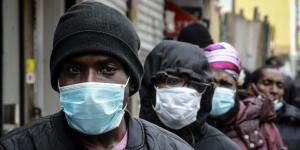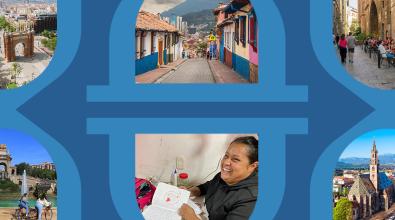Racial disparities require ‘urgent attention,’ health expert says

As a growing number of states begin reporting COVID-19 data by race, a troubling picture is coming into focus of racial disparities in the disease’s impact: African-Americans account for a disproportionate share of confirmed cases and deaths. In Wisconsin, for example, African-Americans make up 6 percent of the population but a third of COVID-19-related deaths. A number of states are reporting disproportionate impact among Hispanic and Native American persons as well.
But what can city leaders do about this problem now? That was a focus of yesterday’s online coaching and learning session of the COVID-19 Local Response Initiative. Dr. Lisa Cooper of the Johns Hopkins Bloomberg School of Public Health told hundreds of local leaders that, despite the nation’s long history of health disparities along racial and ethnic lines, there are things they can do to save lives. “This is a problem that is going to require urgent attention,” she said, “not only from public health professionals but also from policy makers.”
It’s a complex challenge, Cooper said. Many people of color are working in essential jobs keeping them out and about with potential exposure to the coronavirus. Only one in five African-Americans and one in six Hispanic individuals are able to telework. In addition, Cooper said, they’re more likely to live in crowded or multigenerational settings where the virus spreads easily at home, lack healthcare services, and distrust institutions owing to past experiences with discrimination.
Here are five things Cooper said mayors can do right now.
1. Track COVID-19 data by race, ethnicity, and geography. There’s a lot more data being collected now than when racial and ethnic disparities began making headlines in early April. Yet big gaps persist. Nine states still are not breaking out counts of confirmed cases by race; 12 states are not doing that for deaths; and only two states — Kansas and Illinois — are reporting demographic data on who is getting tested.
Cooper said mayors can collaborate with county officials on getting data on race, ethnicity, and geography, and put that into dashboards that paint clear pictures of where COVID-19 hotspots are. That way, mayors can understand where resources are most needed. “The more granular and specific we can get with the data, the more helpful it will be,” she said. “If you can get it at the ZIP Code or neighborhood level, it’ll be more informative.”
2. Communicate and build trust with communities of color. To overcome mistrust, Cooper said, mayors need to make sure their communications with communities of color are a two-way conversation. “They need to be given opportunities to talk about their needs and make sure that they’re being heard by their leaders,” she said, suggesting that mayors can build relationships by convening advisory boards of trusted community leaders who can serve both as messengers and eyes-and-ears.
“Think of those people who everyone in these communities of color look up to,” she said. “It might be someone who’s a leader in the faith community, or somebody who owns a neighborhood center, or just somebody who is well known and connected. All of these people are critically important to have as part of your kitchen cabinet.”
3. Enhance access to testing and healthcare. Mayors can target communities of color for additional testing capacity, and for example, take car-ownership rates into account in deciding whether a drive-through or mobile-unit approach makes more sense, Cooper said. It’s also really important to make testing available regardless of whether people have health insurance or immigration documentation. That will encourage participation, Cooper said. “You want to reassure folks that, if they do show up for care, they’re not going to be turned in to some authority or get hit with a huge bill.”
Amidst the current crisis, it’s also important not to forget the health disparities that were present before COVID-19. African-Americans have higher rates of diabetes, hypertension, and heart disease than other groups. With the healthcare system so focused on COVID-19, Cooper said, “people still need to know who they can call and where they can go for help at a time such as this…. People with diabetes or high blood pressure still need to take their medications.”
4. Protect essential and low-wage workers. As recent COVID-19 outbreaks in meatpacking plants have made clear, people working in essential jobs need gloves, masks, and the ability to keep a distance from others. Mayors can make sure those employed by city government have all the equipment they need, and work with local employers to do the same, Cooper said. They also can push for paid sick leave for these workers, or “hazard pay” increases for workers who are going beyond the call of duty by risking their health.
5. Provide social services to keep vulnerable groups safe. At a time when many people are struggling to access basic needs like food or transportation, mayors can play a role in filling the gap. “We know people of color, immigrants, and persons with low income may not be able to practice safe social distancing because they need to shop for food more often,” Cooper said. Mayors can forge collaborations with local nonprofits or businesses to set up deliveries or pickups of food and medicine, or assist with applying for unemployment benefits, for example. “Helping people meet their basic needs,” Cooper said, “actually helps them keep safe and will save lives.”
For more information:
- See slides from Dr. Cooper’s presentation.
- State of the states on racial data transparency (Johns Hopkins University)
- State-by-state data on COVID-19 confirmed cases deaths by race and ethnicity (Kaiser Family Foundation)
- COVID-19 in racial and ethnic minority groups (CDC)



